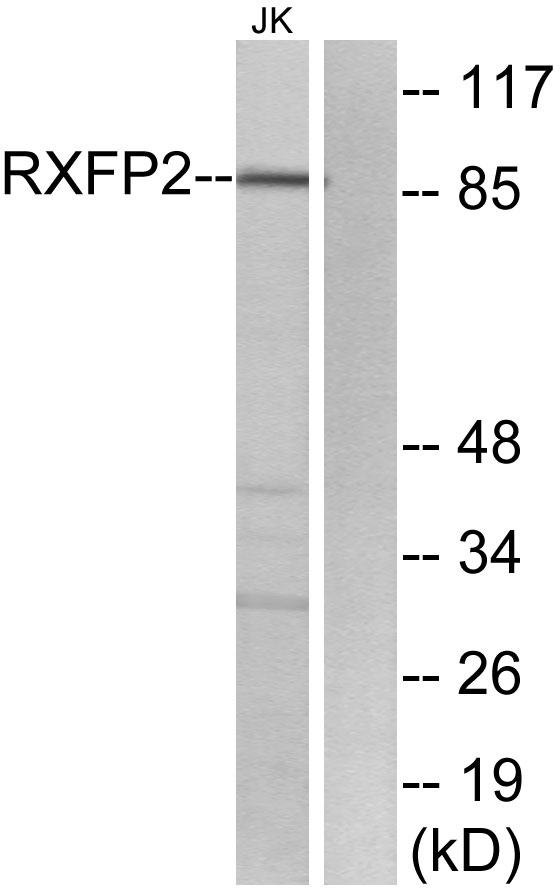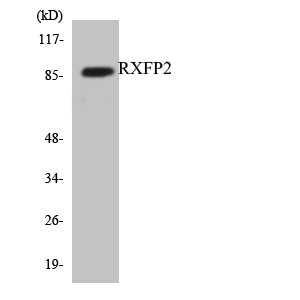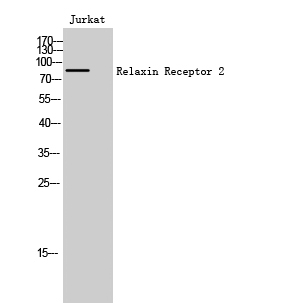产品名称
Relaxin Receptor 2 Rabbit Polyclonal Antibody
别名
RXFP2; GPR106; GREAT; LGR8; Relaxin receptor 2; G-protein coupled receptor 106; G-protein coupled receptor affecting testicular descent; Leucine-rich repeat-containing G-protein coupled receptor 8; Relaxin family peptide receptor 2
存储缓冲液
Liquid in PBS containing 50% glycerol, 0.5% BSA and 0.02% New type preservative N.
Human Gene Link
http://www.ncbi.nlm.nih.gov/sites/entrez?db=gene&term=122042
Human Swissprot No.
Q8WXD0
Human Swissprot Link
http://www.uniprot.org/uniprotkb/Q8WXD0/entry
Mouse Gene Link
http://www.ncbi.nlm.nih.gov/sites/entrez?db=gene&term=140498
Mouse Swissprot No.
Q91ZZ5
Mouse Swissprot Link
http://www.uniprot.org/uniprot/Q91ZZ5
免疫原
The antiserum was produced against synthesized peptide derived from human RXFP2. AA range:113-162
特异性
Relaxin Receptor 2 Polyclonal Antibody detects endogenous levels of Relaxin Receptor 2 protein.
稀释度
WB 1:500-2000;IHC-p 1:50-300
宿主
Polyclonal, Rabbit,IgG
背景介绍
This gene encodes a member of the GPCR (G protein-coupled, 7-transmembrane receptor) family. Mutations in this gene are associated with cryptorchidism. Alternatively spliced transcript variants encoding different isoforms have been found for this gene.[provided by RefSeq, Oct 2009],
组织表达
Expressed mainly in the brain, kidney, muscle, testis, thyroid, uterus, peripheral blood cells and bone marrow.
细胞定位
Cell membrane; Multi-pass membrane protein.
信号通路
Neuroactive ligand-receptor interaction;
功能
caution:It is uncertain whether Met-1 or Met-18 is the initiator.,disease:Defects in RXFP2 are a cause of cryptorchidism [MIM:219050]; also known as impaired testicular descent. It is one of the most frequent congenital abnormalities in humans, involving 2-5% of male births. Cryptorchidism is associated with increased risk of infertility and testicular cancer.,function:Receptor for relaxin. The activity of this receptor is mediated by G proteins leading to stimulation of adenylate cyclase and an increase of cAMP. May also be a receptor for Leydig insulin-like peptide (INSL3).,similarity:Belongs to the G-protein coupled receptor 1 family.,similarity:Contains 1 LDL-receptor class A domain.,similarity:Contains 10 LRR (leucine-rich) repeats.,tissue specificity:Expressed mainly in the brain, kidney, muscle, testis, thyroid, uterus, peripheral blood cells and bone marrow.,
纯化
The antibody was affinity-purified from rabbit antiserum by affinity-chromatography using epitope-specific immunogen.



